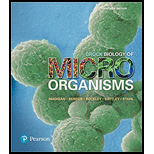
Describe a key physiological feature of the following Bacteria that would differentiate each from the others: Acetobacter, Methylococcus, Azotobacter, Photobacterium, Desulfovibrio, and spirillum.
To explain:
A key physiological feature that is present in the following bacteria that would differentiate them from each other: Acetobacter, Methylococcus, Azotobacter, Photobacterium, Desulfovibrio, and Spirillum.
Introduction:
Bacteria that are able to convert ethanol to acetic acid are classified under the genus of Acetobacter. Desulfovibrio contains gram-negative sulfate reducers. The genus Methylococcus contains gram-negative cocci. Photobacterium belongs to the genus of Vibrionaceae are gram-negative bacteria.
Explanation of Solution
A key physiological feature that is present in all the given genus of bacteria that would differentiate each from the other is their oxygen requirement. These geneses also differ in their metabolism.
Acetic acid bacteria are economically important as they are employed in the production of vinegar. Firstly, ethanol is converted into wine which in turn is converted into acetic acid that results in the production of vinegar. These bacteria are obligate aerobes that are also used in the production of vitamin C. Oxidize acetate completely to carbon dioxide by complete citric acid cycle.
Methylococcus are obligately methanotrophic in nature. These bacteria are involved in the oxidation of methane that is produced biologically. Therefore, these bacteria play a major role in decreasing the effect of a greenhouse gas-methane. This genus includes methanotrophic bacteria that carry out an incomplete citric acid cycle.
Azotobacter is a genus that contains free living, motile diazotrophs. These bacteria form a resting structure known as cyst. Azotobacter is used as a bio-fertilizer during the cultivation of crops. These aerobic bacteria fixes the atmospheric nitrogen by the use of nitrogenase enzyme.
Photobacterium are facultative aerobes. These bacteria possess bioluminescent property. The light emitting property of such organisms is termed as bioluminescence. The gene which is responsible for this property is lux CDABE. The phenomenon of bioluminescence is catalyzed by the enzyme luciferase.
Desulfovibrio are anaerobic, gram-negative sulfate reducing bacteria. These bacteria utilize anoxygenic lactate-sulfate medium that contains ferrous iron. These bacteria are particularly noted as there are capable of producing methyl mercury. This compound can cause health defects in human (cardiovascular diseases) and children.
Spirillum is a genus of microaerophilic bacteria. They are gram-negative and motile by polar flagella. These bacteria are spiral in shape and possess a rigid structure. These bacteria are the causative agents of rat-bite fever.
Want to see more full solutions like this?
Chapter 15 Solutions
BROCK BIOL. OF MICROORGAN.-W/ACCESS >I
- What are the two points of clinical significance that medical relevant bacterial are able to grow at 24 degrees Celsius (room temperature)?arrow_forwardCan you thoroughly explain the effect of pH on the growth of Bifidobacterium, an anaerobic, gram positive, non-acid-fast, nonsporeforming and nonmotile bacteria?arrow_forwardCan you thoroughly explain the effect of Benzoate at different pH levels on the growth of Bifidobacterium, an anaerobic, gram positive, non-acid-fast, nonsporeforming and nonmotile bacteria?arrow_forward
- How might the bacterial growth curve change if a facultative anaerobe was first monitored for growth when grown in the presence of an O2 environment and, during its log (exponential) growth phase, the organism was suddenly placed in an anaerobic environment?arrow_forwardWhat characteristics of azotobacter species protect their nitrogenase enzyme from inactivation by oxygen?arrow_forwardWhy do most iron-oxidizing bacteria grow at anacidic pH?arrow_forward
- Characterize and give a brief description of the following bacteria: Bacillus cereus Clostridium difficilearrow_forwardHow does anaerobic glucose catabolism differ in Lactobacillusand Pyrococcus furiosus?arrow_forwardIn what ways are the dissimilative iron-reducingbacteria Shewanella and Geobacter similar, and in whatways are they different?arrow_forward
